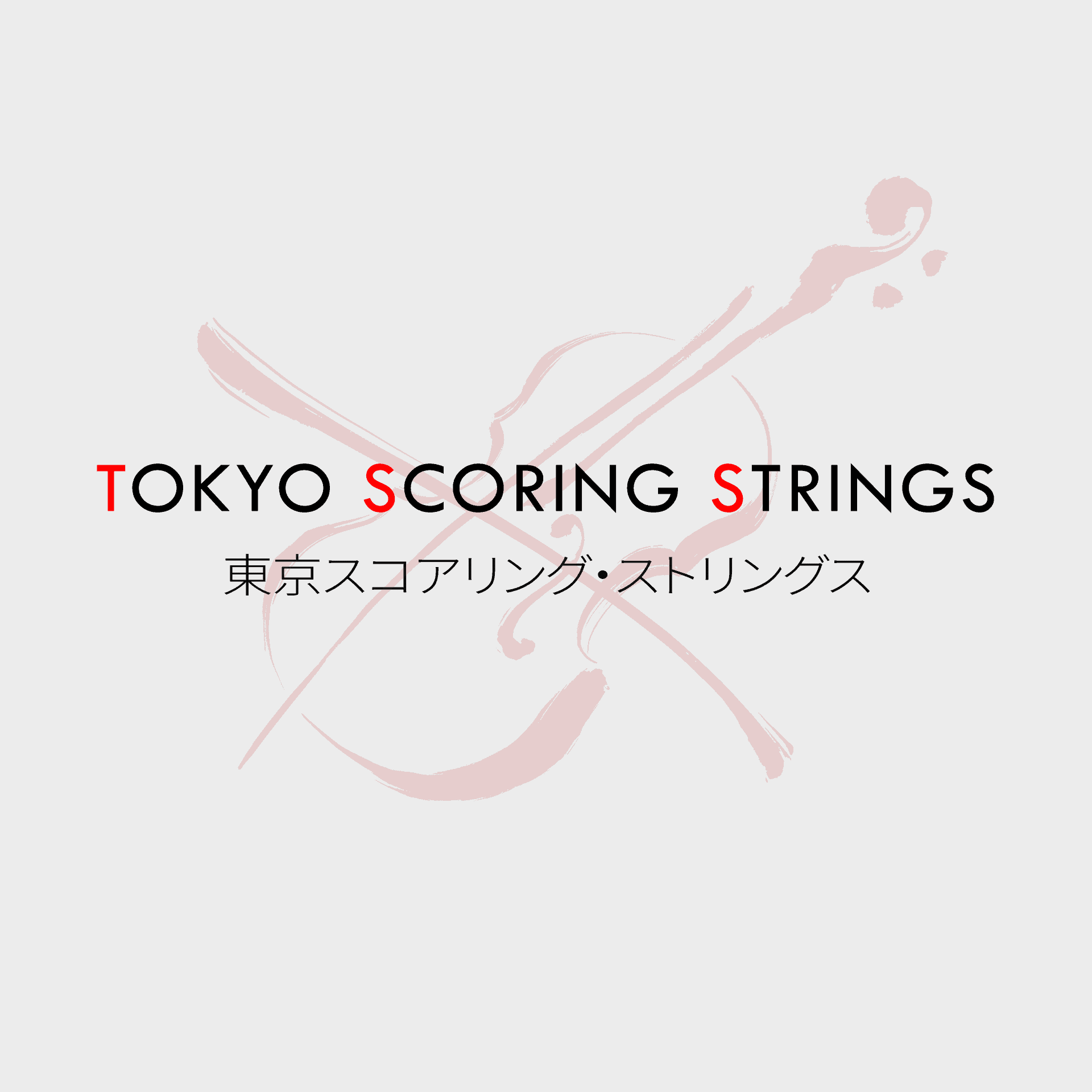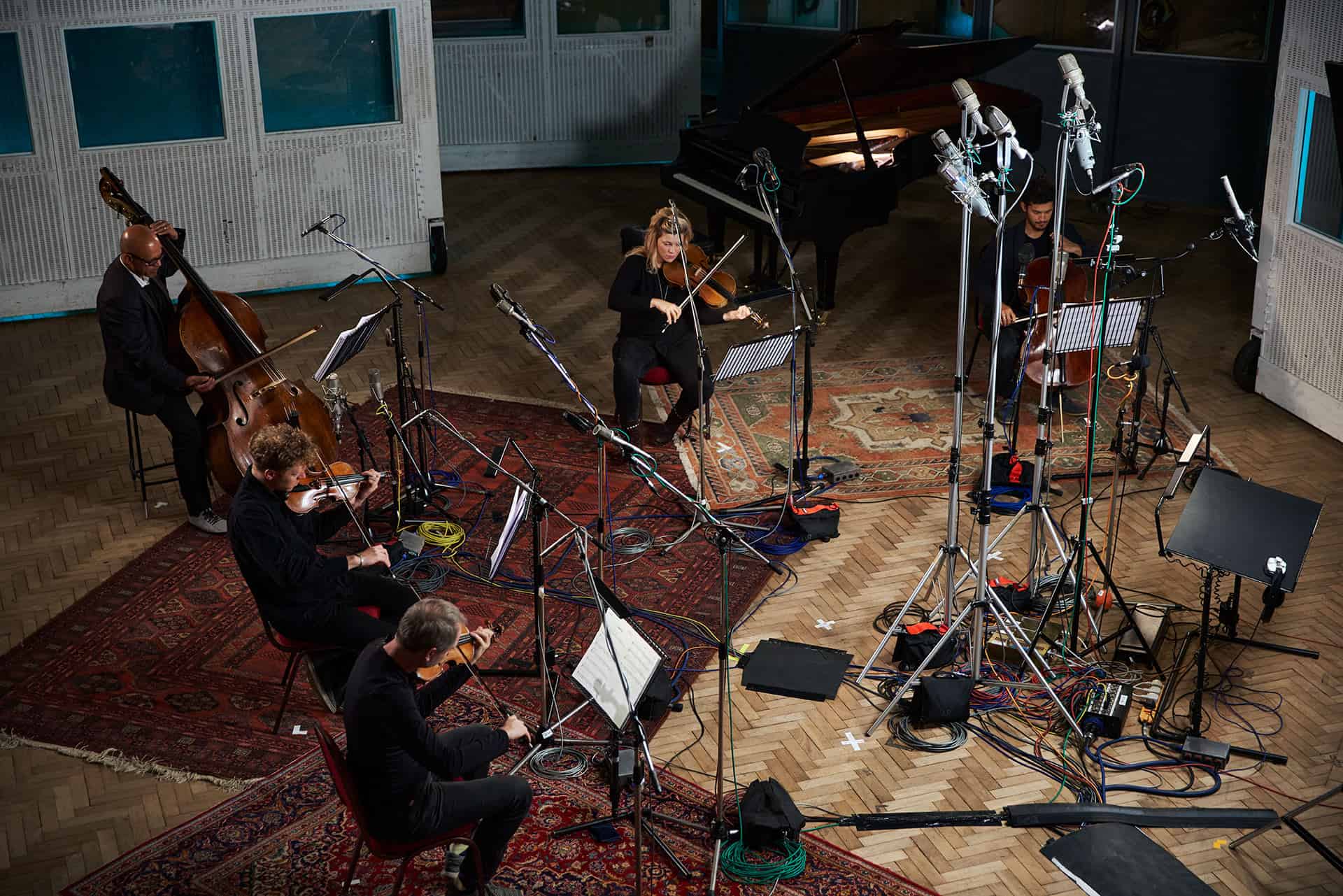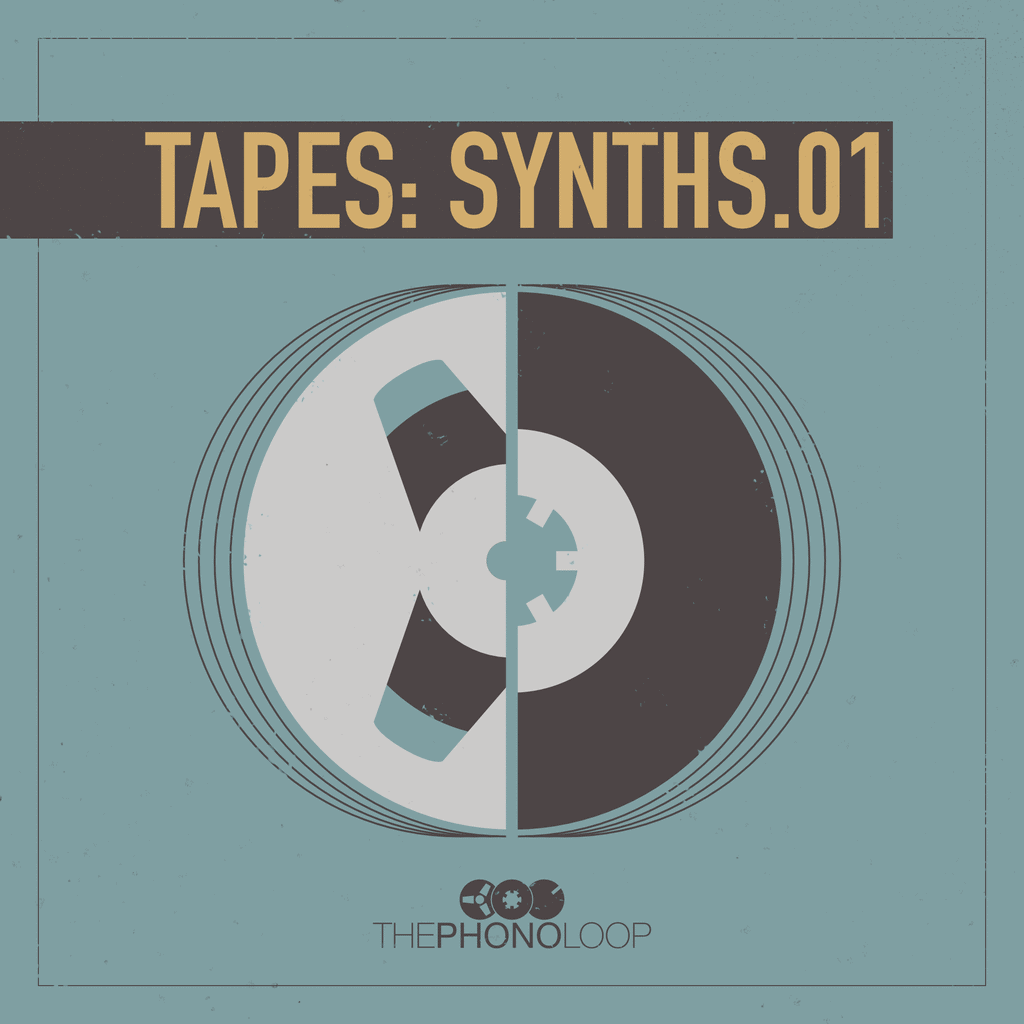Impact Soundworks released Tokyo Scoring Strings, a new sample library from Impact Sounds. This innovative flagship orchestral string library will allow composers worldwide to access some classic sound effects that have been associated with one of Japan’s top session string ensembles and are heard on countless video game or anime soundtrack recordings!
Japanese music has a long and rich history, and over the centuries various instruments and styles have emerged. One of the most unique and arresting aspects of Japanese music is the mix of traditional Japanese instruments with Western orchestral strings.
This juxtaposition of old and new creates a sound that is both novels and deeply rooted in tradition. The result is a fascinating fusion of East and West that has captivated listeners around the world. For anyone interested in exploring Japanese music, this intriguing blend of sounds is well worth seeking out.
Legendary Sound City Studio
This release promises a unique orchestral string sound created by a Japanese session string ensemble. The library was recorded by Japan’s top recording engineer, Mitsunori Aizawa, at the legendary Sound City Studio.

The first in this series provides an authentic Japanese studio feel while also providing unique prospects for future libraries as they continue their dedication to capturing distinctive regional styles from around our globe.
The sounds of Koichiro Muroya Strings
Tokyo Scoring Strings is a groundbreaking release from Impact Soundworks, featuring the sounds of Koichiro Muroya Strings. This is the first sample library that sets out to capture and make Japan’s distinctive studio sound available to composers around the world: an instantly recognizable mix of traditional Japanese instruments and orchestral strings.
Traditional Japanese music is known for its unique sound, which is created by a mix of traditional Japanese instruments and orchestral strings. The result is a sound that is both haunting and beautiful, and which has been captivating audiences for centuries.
One of the most iconic aspects of traditional Japanese music is the use of the koto, a zither-like instrument with thirteen strings. The koto is believed to have originated in China, and it was introduced to Japan in the seventh century.
Since then, it has become an essential part of traditional Japanese music, appearing in both solo and ensemble pieces. Other traditional Japanese instruments include the shakuhachi (a bamboo flute) and the taiko (a type of drum). These instruments are often used to create a melancholy and introspective feel, which is in contrast to the more celebratory sounds of Western classical music.
The first significant difference between Japanese and Western instruments is that they are often recorded in large groups, making them more challenging to play. The library contains recordings of five-string sections: Violins I, Violins II, Violas, Cellos, and Contrabasses. The total of players recorded is 8, 6, 4, 4, and 3, respectively.
This reliance on quantity can be both an advantage for performance because it gives players abundant amounts of time with their instrument (as opposed to just five minutes), but also poses some problems when trying to track down certain numbers or sections within your music library since each recording covers such a wide area!
Orchestral String Sound
The term orchestral string sound can be used to describe the sound produced by a group of string instruments playing together. The tone of the orchestra will depend on the specific instruments involved, as well as the size and type of ensemble. For example, a symphony orchestra typically features a larger number of players than a chamber orchestra, and the sound will be fuller and richer as a result.
The addition of violins, violas, and cellos can also contribute to the overall sound of the orchestra, creating a more lush and mellow tone. In general, orchestras strive to create a balance between the different sections so that each instrument can be heard clearly. This gives the music a sense of cohesion and allows the listener to appreciate the beauties of each individual instrument.
The second major difference between Japanese and Western instruments is the way in which they are played. Western instruments are often played with a great deal of vibrato, which gives them a more expressive sound. In contrast, Japanese instruments are typically played with less vibrato, resulting in a more restrained tone. This difference can be heard clearly in the recordings of Tokyo Scoring Strings.
The final major difference between these two styles of music is the use of vibrato. Western instruments typically use vibrato to add expression and color to the sound, while Japanese instruments typically don’t use vibrato at all. This gives traditional Japanese music a more restrained and introspective feel, in contrast to the more celebratory sound of Western classical music.
The library contains recordings of five-string sections: Violins I, Violins II, Violas, Cellos, and Contrabasses. The total of players recorded is 8, 6, 4, 4, and 3, respectively.
This reliance on quantity can be both an advantage for performance because it gives players abundant amounts of time with their instrument (as opposed to just five minutes).

This also poses some problems when tracking down specific numbers or sections within your music library since each recording covers such a vast area!
Contrast Through Smaller Ensemble Sizes
The acoustic space afforded by these reductions means there is only so much sound coming towards them before they must react quickly enough; this focus goes hanamid-mai, a unique compositional approach that lets them pull out different colors from their instrument as opposed to just playing loud or soft.
Tokyo Scoring Strings are five independently-recorded sections of strings (Violins 1, Violin 2 and etc.) in a typical Japanese ensemble size used for small or large productions alike.
These recordings were made at the renowned legendary Sound City Studio recording studio by Mitsunori Aizawa, who has been known as one of Japan’s best engineers when it comes to stringed instruments!
Japanese Session String Ensemble
The Japanese session string ensemble is a type of musical group that is traditionally composed of three string instruments and a percussion instrument. The ensemble typically consists of a shamisen, a koto, and a fiddle, along with a taiko drum. The music of the Japanese session string ensemble is characterized by its use of pentatonic scales and its focus on melody over harmony. The ensemble often performs pieces that are improvised or based on traditional folk tunes.
The Japanese session string ensemble originated in the Edo period when musicians would gather together to play music for their own enjoyment. Over time, the music of the ensemble became more formalized, and it began to be performed at religious ceremonies and public events. Today, the Japanese session string ensemble is a popular form of traditional Japanese music, and there are many different groups that specialize in performing this type of music.
The Tokyo Scoring Strings library has a comprehensive set of articulations, dynamics, and legato types that can be customized to your preference. In addition, there are four variable legato speeds to choose from, allowing for agile and expressive writing in both traditional scoring or rock & pop productions.
Tokyo Scoring Strings Detail
Tokyo Scoring Strings is the first sample library that sets out to capture and make Japan’s distinctive studio sound available to composers around the world: an instantly recognizable mix of traditional Japanese instruments and orchestral string sound.
The first significant difference between Japanese and Western instruments is that they are often recorded in large groups, making them more challenging to play.
This reliance on quantity can be both an advantage for performance because it gives players abundant amounts of time with their instrument (as opposed to just five minutes), but also poses some problems when trying to track down specific numbers or sections within your music library since each recording covers such a vast area!

Tokyo Scoring Strings are five independently-recorded sections of strings (Violins 1, Violin 2, etc.) in a typical Japanese ensemble size used for small or large productions alike.
All come to life also to the delicate nuance, distinctive sound, and superb detail preserved by the deep editing as you expect from industry-standard string libraries.
The focused studio spaces define the vibe of Tokyo Scoring Strings features Japanese ensembles equally qualified to record world-famous Japanese productions. Now available as your Kontakt virtual instruments with remarkable sound.
These recordings were made at the renowned Sound City recording studio by Mitsunori Aizawa who has been known as one if Japan’s best engineers when it comes to stringed instruments!
The Tokyo Scoring Strings library has a comprehensive set of articulations, dynamics, and legato types that can be customized to your preference. In addition, there are four variable legato speeds to choose from. It allows for nimble and expressive writing in both traditional scoring and rock & pop productions.
A comprehensive set of articulations, dynamics, and legato types is important for any musician. Articulations help to shape the sound of a note, and dynamics add interest and variation. Legato types give musicians the ability to create smooth, connected phrases. By having a variety of articulations, dynamics, and legato types at their disposal, musicians can more easily create the sounds they envision.
While some musicians may be able to get by with a limited palette of articulations, dynamics, and legato types, others will find that a broader range is essential. For instance, a jazz musician may need a wider range of articulations to create the complex rhythms and sounds of their style. A classical musician may need a greater variety of dynamics to express the full range of emotions in a piece.
The Tokyo Scoring Strings library provides a comprehensive set of articulations, dynamics, and legato types that can be customized to your preference, making it an essential tool for any musician.
Tokyo Scoring Strings Content
Tokyo Scoring Strings is a great new sound from Impact Soundworks. This is the first sample library that sets out to capture and make Japan’s distinctive studio sound available to composers around the world: an instantly recognizable mix of traditional Japanese instruments and orchestral strings.
- 24-bit / 48kHz recordings (downmixed from 96 kHz)
- Four mic positions: close, room, decca, surround
- Mitsunori Aizawa’s personal board mix
- Sustain senza vibrato, con vibrato, molto vibrato
- Up to 5 dynamic layers per articulation
- Spiccato, staccato, staccatissimo, and spiccato secco
- Legato bowed & slurred, with 2x RR (up/down bow)
- Portamento bowed & slurred
- Tremolo, harmonics, trills (whole-tone, half-tone)
- Long & short decrescendo & sforzando
Impact Soundworks have paid particular attention to delivering outstanding legato as well as the agility and crisp short notes that are such strength of smaller Japanese string sections. In addition, the fink signatures review of these string instruments has been consistently positive, with many customers praising the authentic and dynamic sound they deliver. With a focus on capturing the nuanced playing techniques of Japanese string players, Impact Soundworks has created a library that is both expressive and versatile, suitable for a wide range of musical genres and styles. This attention to detail and dedication to authenticity has made their Japanese string instruments a popular choice among composers and producers worldwide.
Mix and Mics
Each division was recorded in situ: though each was recorded separately. They were positioned accurately in the physical space, so no panning is required to produce the fitting ensemble sound. Additionally, the recordings were captured at high resolution, allowing for maximum flexibility in post-production. This means that producers can manipulate the sound to fit their specific needs, whether they want to granulate 2 review each individual division or blend them together seamlessly. The attention to detail in the recording process ensures that the final ensemble sound will be of the highest quality.
When it comes to audio recordings, fidelity refers to the accurate reproduction of the sound. The term is usually used in reference to musical recordings, and the quality of the recording can have a significant impact on the listener’s experience. A high-fidelity recording will sound clear and true to the original performance, while a low-fidelity recording may be muffled or sound distorted.
The majority of commercially released recordings are made at a 44.1 kHz sampling rate, which is considered standard fidelity. However, some labels are now releasing recordings made at a higher 96 kHz sampling rate. While these recordings provide superior fidelity, they require more storage space and may not be compatible with all playback devices. Ultimately, the decision of whether to release a high- or low-fidelity recording is a financial one, as higher-quality recordings require more time and resources to produce.
All recordings were captured at 24-bit, 96 kHz fidelity, and downsampled to 48 kHz using the most pristine conceivable resampling algorithm.

Tokyo Scoring Strings Articulations
All of the articulations below are genuine, one-of-a-kind recordings, not remakes or edits of previous samples!
- Arco (Sustain) – 5 dynamics, 3 vibrato levels (senza, con, molto)
- Bowed Legato – 3 dynamics, 2x rr
- Slurred Legato – 3 dynamics, 2x rr
- Bowed Portamento – 3 dynamics
- Slurred Portamento – 3 dynamics
- Rebow – 3 dynamics, 5x rr
- Staccato – 5 dynamics, 6x rr
- Staccatissimo – 5 dynamics, 6x rr
- Spiccato – 4 dynamics, 6x rr
- Crisp (Secco) Spiccato – 2 dynamics, 6x rr
- Sforzando – Dotted eighth & dotted quarter lengths, 3x rr
- Decrescendo – Dotted eighth & dotted quarter lengths, 3x rr
- Pizzicato – 3 dynamics, 4x rr
- Tremolo – 4 dynamics
- Trills – 2 dynamics, whole tone & half tone
- Releases – natural, excited, and staccato
- Harmonics
It’s hard enough keeping up with an entire orchestra, but if you’re playing solo? It becomes even more challenging!

Luckily Impact Sounds made sure their product would suit either situation by including both styles in each one they make. They are allowing you not only to play like your favorite orchestral musician or create emotional moments on your composition with ease, thanks to these fantastically crafted strings.
Emotional moments are key in any great composition. They are what make the listener feel something, whether it be happiness, sadness, love, or anger. Without these moments, a composition can feel flat and lifeless. So how does one go about creating an emotional moment? There are a few things to keep in mind. First, the music should support the emotions you are trying to convey.
The melody, harmony, and rhythm should all come together to create the desired feeling. Second, the lyrics should be evocative and meaningful. They should paint a picture in the listener’s mind and touch their heart. Lastly, the performance should be heartfelt and honest. The musician must believe in what they are playing and conveying in order to make the listener believe.
Tokyo Scoring Strings is the first library that sets out to capture the distinctive Japanese studio sound and make it available to composers around the world. This library was recorded in situ, with each instrument mic’d in its own space for an accurate ensemble sound.
Tokyo Scoring Strings Team Japan
Impact Soundworks is proud to partner with an incredible team of musicians and collaborators in Japan. These artists bring their creative vision for the project, which will result in a musical experience like no other!
- Koichiro Muroya Strings, led by Koichiro Muroya. The most in-demand session ensemble in all of Japan. Their exquisite playing can be heard on many of your favorite soundtracks.
- Mitsunori Aizawa, Japan’s top engineer, is responsible for mixing and recording hundreds of world-famous scores.
- Sound City, is an incredible recording space with over 60 years of history. This choice of the studio gives Tokyo Scoring Strings a tighter, more focused sound that lends itself extremely well to more agile playing and mixing with external reverb.
- Renowned anime & film composer Masaru Yokoyama, brought his experience recording scores around the world through his companies Plugnote and MiracleBus.
- Crypton Future Media and SonicWire, a Japanese distributor have helped with the project from the very beginning.
Sound City is an incredible recording space with over 60 years of history. The studio has been the birthplace of some of the most iconic albums of all time, including Nirvana’s Nevermind, Fleetwood Mac’s Rumours, and Tom Petty’s Full Moon Fever. In recent years, the studio has undergone a renaissance, thanks to the efforts of owner Dave Grohl.
Grohl has painstakingly restored the studio to its former glory, and he continues to attract top talent to its walls. The result is a truly unique space that captures the magic of its rich history while also remaining at the forefront of the music industry. Sound City is a must-visit for any music lover.
There are five independently recorded parts in Tokyo Scoring Strings (Violins 1, Violins 2, Viola, Cello, Bass) in a typical Japanese ensemble size (8/6/4/4/3) suitable for small and large productions alike.

Lookahead Mode
Not only has the library’s script engine been overhauled with a groundbreaking new “Lookahead Mode”. You can perform your arrangement in an expressive and nuanced way. This new instrument allows for expressive and nuanced performances with minimal MIDI editing. Making it a great option for musicians who want to create their own unique sound on the instrument.
I Am In Love?
What’s not to love? The sound of this instrument included in the flagship orchestral string library is beyond beautiful. From the rich, layered samples that give you everything from vibrato sounds and layer effects in one package.
Deeply sampled playing techniques of orchestral string sound featuring Japanese strings give you more dynamic control over your string samples. This enables effortless control over dynamics, dynamic range, vibrato intensity, bowing style, and more.
With new scripting innovations like the Lookahead Mode, you can create natural-sounding phrases with minimal editing of MIDI information. This is great for composers who need control over their instruments but don’t have time to be expert programmers in every situation!
Flagship Orchestral String Library
I am very impressed with this library’s capabilities! This is a great fit for Japanese soundtracks, Film Score & Trailer, and western scores that require incredible agility and expressiveness. In addition, I highly recommend it to most composers and future musical heroes who realize virtually any score.
Finally, the best part is that Impact Soundworks will continue adding content for free as long as possible! So if there was ever a time when you wanted access to high-quality string samples… That’s right now.
Tokyo Scoring Strings is the answer to any composer’s dreams of having a world-class strings library in their arsenal. It’s also perfect for those who’ve never used such an instrument before because it has everything from deep-sampled playing techniques and expressive scripting that will take care of all the work of creating the perfect sound for you.
When we think they can’t top themselves, Impact Soundworks relapse with another fantastic innovation. This time a Japanese session string ensemble on their already Quite Distinctive Product line-up!.
The range between short note combinations makes it easy for any playing style or level of mastery. If you’re looking for an orchestra sound that can be used in a variety of ways, this is the one to get!
Conclusion
Tokyo Scoring Strings is an excellent addition to any library and will undoubtedly be helpful for all sorts of compositions. They’re not limited to just movie soundtracks or anime themes, as they could also fit well with anything from jazz, rock & roll, or even heavy metal! Its versatility makes it a fantastic product by Impact Soundworks that is sure to be among your favorites.
I’ve enjoyed using this library because the sound presence and moderate ambiance are unique compared to overseas libraries that I usually use. Unlike other libraries, it has a wide range of sounds to cover many genres. It isn’t only valid for epic music and rock and pop tunes.
Rating: Five Out Of Five Stars
You’ve just found another stellar string library! This library is one-of-a-kind. The first time I played this passage, it was like a bolt of electricity shot through my fingers and into the strings.
The output is an unadorned version that does not repeat unnecessarily verbatim; however, some accents or dynamic markings have been added for effect to make it sound more creative than simply word-for-word transcriptions.
Tokyo Scoring Strings is a magnificent sounding library. The sound quality is fantastic, and it’s one of the most expressive libraries on Kontakt.
Every time they come out with a new product, I’m always excited and curious about what it will bring next; we all know Impact Soundworks makes some fantastic products, and Tokyo Scoring Strings doesn’t disappoint!
The library is so much more than I ever could’ve imagined. It does seem like a magical place, and it’s perfect for people who love to compose and produce. This makes it ideal for musicians who want to create their unique sound on the instrument and shows how much attention to detail they put into this product.
Tokyo Scoring Strings is a beautifully recorded string library that will be a valuable addition to any composer’s toolkit. The recordings are pristine, and the instruments have a lovely richness and depth of sound. The library features a wide range of articulations, allowing for a great deal of flexibility in how the strings can be played.
The legato recordings are particularly stunning, and the long sustain samples give the strings a gorgeous vibrato. In addition, the library includes a number of special effects, such as bowed Harmonics and Rushes. These add an extra layer of interest to the sound, and can really help to bring a composition to life. Tokyo Scoring Strings is an impressive string library that is sure to find a place in many composers’ toolkits. The sounds are beautiful and the playing is wonderfully expressive, making it perfect for a wide range of compositions.











